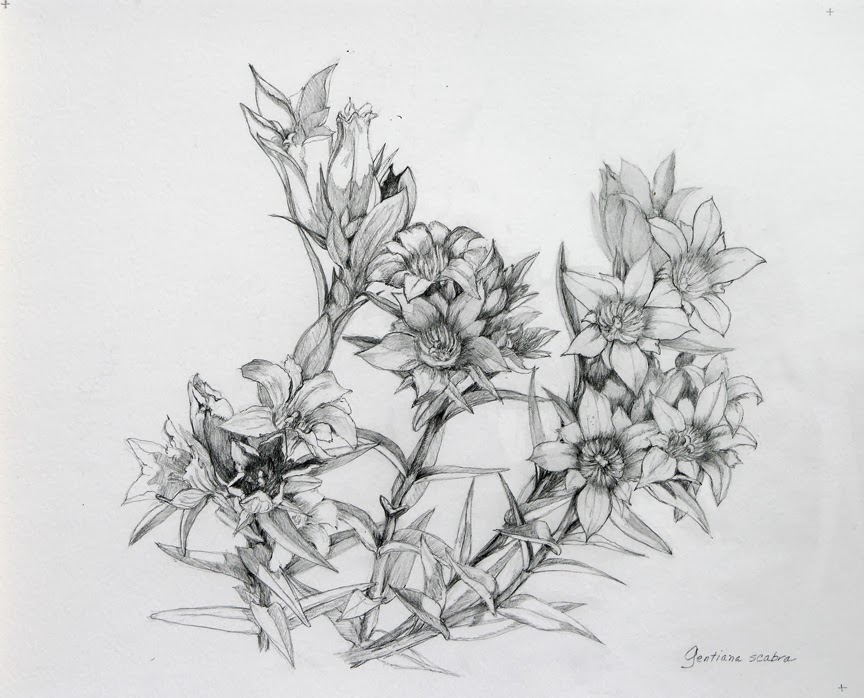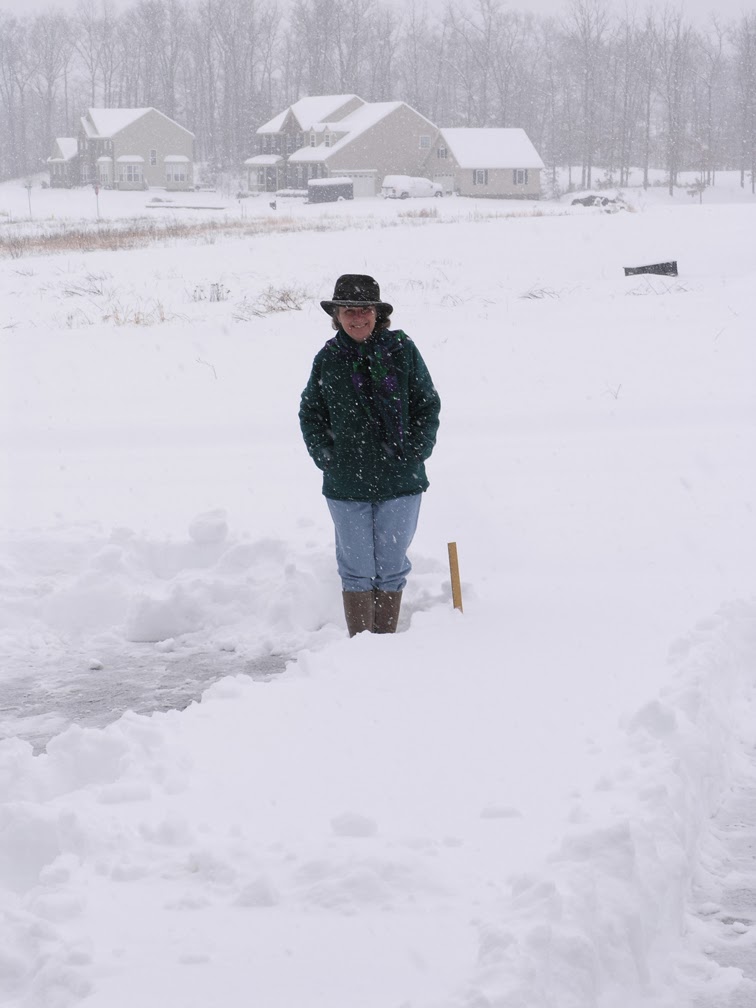 |
| The Shenandoah River at Calme's Neck |
A few Saturdays past I joined the Virginia Native Plant Society's Piedmont Chapter on a walk at Calme's Neck. This site is registered by VNPS as a unique area full of native plants, some quite unusual, and is on private land. One of the VNPS members who lives in this development hosted the group.
After driving up and around some steep curves on a gravel road for several miles, I arrived a little later than the announced 10 AM meting time. Our hike leader, Gary Fleming, a gentleman who has been mapping the flora of Virginia for the past 30 years for the Digital Atlas of the Virginia Flora, was about to conclude his introductory talk. There is probably not a corner of the state that he has not covered at some time or another. There were about 25-30 of us in the group--some of the VNPS chapter members have been visiting this particular site for the past 21 years.
 |
| Gary Fleming with VNPS hikers |
We started our hike near the top of a hill and walked towards some rocky high bluffs overlooking the Shenandoah river. The just-budding trees were bare enough to allow spectacular views of the farms on the other bank and the distant mountains on the other side of the valley.
The rock ledges sheltered a variety of mosses, early Saxifrage (Saxifraga virginiensis), and ferns, among them walking fern, which I've only seen once before in Maryland.
 |
| Flower Buds of Early Saxifrage |
 |
| Rock ledge with mosses, walking fern (on upper left ledge) and saxifrage |
 |
| Rare rose moss (Rhodobryum rosea) |
Beyond the bluffs, the hill sloped down and the trail parallelled the river. Virginia Bluebells grew thickly along this floodplain, but with spring so late, their flower buds were still pink and rolled up tight. There were also both Dutchman's Breeches and Squirrel Corn plants here and there, and one of the ladies on the hike (they were all so knowledgeable!) explained the differences between these two very similar plants: the "breeches" of the Squirrel Corn are much tighter, resembling the Bleeding Heart, the leaves are bluer, and true to their name, the Squirrel Corn has a small underground tuber that resembles a grain of corn (we didn't dig one up to verify this).
 |
| Dutchman's Breeches (Dicentra cucullaria) |
 |
| Squirrel Corn (Dicentra eximia) |
After a while the floodplain narrowed out and we turned inland to walk up a very steep hill that was covered with spring flowers. Twin leaf, a low-growing plant with star-shaped white flowers that I had never noticed before, grew all over the slope. There were also trout lilies, but only one of these in bloom. The more knowledgeable members of the group explained that trout lilies must develop two leaves before they will bloom, and the individual plants found in these woods don't do this very often, although in other regions they do bloom profusely.
 |
| Twin Leaf (Jeffersonia diphylla) |
At one point on the slope I found something among the carpet of leaves that I though might be a dead bird, but upon closer examination it turned out to be a huge owl pellet, with tiny bones imbedded. It was relatively fresh, indicating a large own had been here recently--a barn owl, or something more picturesque?
 |
| Owl pellet |
Back at the top of the hill, I eventually saw our parked cars through the tree trunks, so we had hiked around in a big circle. I was among the laggards at the rear, and most of the other folks had already driven down the gravel road to have our brown-bag lunches by the river. Our picnic site was a lovely grassy spot by the banks of the Shenandoah where the residents of this private enclave had placed a picnic table. It was nice opportunity to get to meet the other members, and quite by coincidence, one of the young ladies in the day's hike turned out to be someone I had been corresponding via Email at the botanist's office in Shenandoah National Park.
 |
| Cormorants perch on trees along the Shenandoah River |
Our hostess, Blanca, had been born in Argentina, and naturally, we spoke a bit in Spanish. As we ate our lunch, we were amused by a group of cormorants flying around on the other bank and diving into the river. I didn't know that cormorants strayed this far inland from coastal areas, but was told that they come regularly to the Shenandoah during their molting season.
All the folks I met were very congenial, and I will definitely be joining VNPS for more hikes in the future. It's a great way to get to know the many beautiful natural treasures in this area!
 |
| Virginia Bluebells (Mertensia virginica) |







































